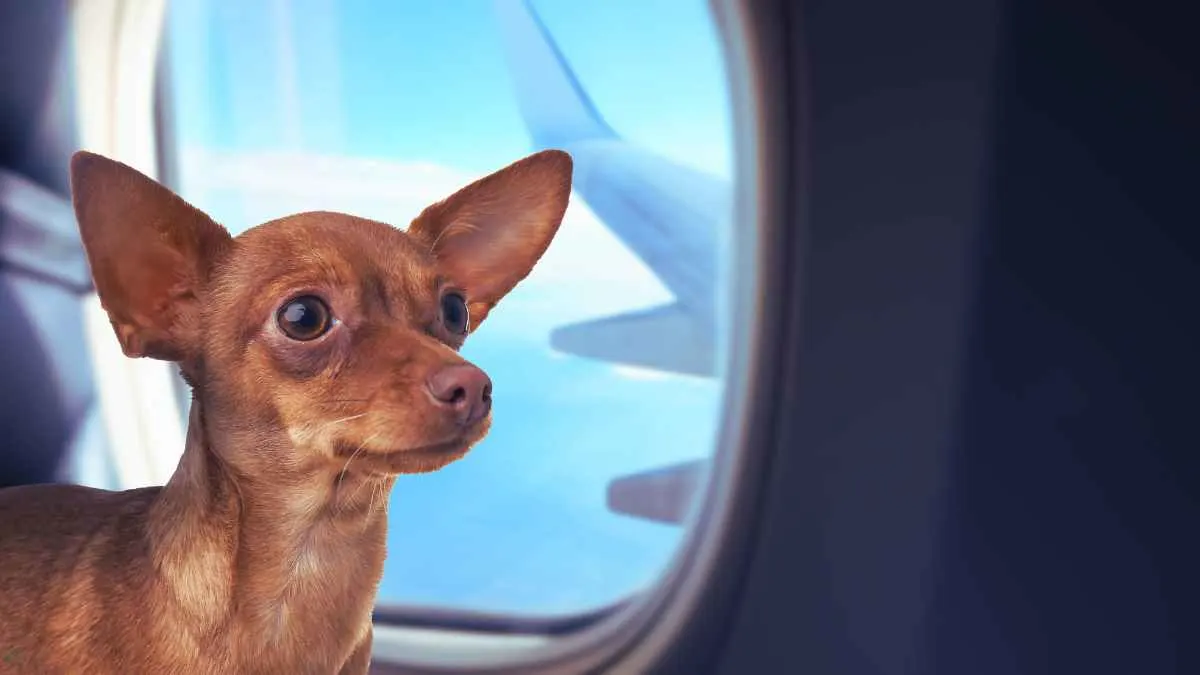Flying Internationally With Dog In Cabin is a growing trend among pet owners seeking to keep their beloved companions close during travels.
If you’re heading to the picturesque streets of Paris, the bustling markets of Bangkok, or the serene landscapes of New Zealand, ensuring a safe and comfortable journey for your dog requires meticulous planning and understanding of various regulations.
Airline Policies and Requirements:
1. Eligibility Criteria
Most airlines permit small dogs to travel in the cabin if they meet specific criteria:
-
Weight Limit: Typically, the combined weight of the dog and carrier should not exceed 15–22 lbs (7–10 kg).
-
Carrier Dimensions: The carrier must fit under the seat in front of you. Common dimensions are approximately 17″ x 11″ x 9″ (43 cm x 28 cm x 23 cm).
-
Health Status: Dogs must be healthy and fit for travel.
-
Age Restrictions: Some airlines require pets to be at least 8 weeks old.
It’s essential to check with the specific airline for their exact requirements, as policies can vary.
2. Documentation
Traveling internationally with your dog necessitates proper documentation:
-
Health Certificate: Issued by a USDA-accredited veterinarian, confirming your dog is healthy and fit for travel.
-
Vaccination Records: Proof of rabies vaccination is often required.
-
Microchip Information: Some countries mandate a microchip for identification.
-
Import Permits: Certain destinations require permits for pet entry.
Always consult the destination country’s embassy or official pet importation guidelines to ensure compliance.
Preparing for the Flight:
1. Choosing the Right Carrier
Selecting an appropriate carrier is crucial for your dog’s comfort and safety:
-
Size: Ensure the carrier is large enough for your dog to stand, turn around, and lie down comfortably.
-
Ventilation: Opt for carriers with adequate ventilation on all sides.
-
Material: Soft-sided carriers are often preferred for in-cabin travel due to their flexibility.
-
Security: Choose carriers with secure zippers and fastenings.
2. Acclimating Your Dog
Familiarize your dog with the carrier well before the flight:
-
Short Trips: Take your dog on short car rides in the carrier to build comfort.
-
Positive Associations: Place treats, toys, and bedding inside to create positive associations.
-
Training: Practice having your dog enter and stay in the carrier for extended periods.
3. Day of Travel
On the day of the flight:
-
Exercise: Provide a walk or play session to help expend energy.
-
Feeding: Feed your dog a light meal a few hours before departure to prevent nausea.
-
Hydration: Ensure your dog has access to water during the journey.
-
Identification: Attach a tag with your contact information to the carrier.
Read Next: Minor Need To Fly Without Parents
Country-Specific Regulations:
Different countries have varying regulations for importing pets:
-
European Union: Requires a pet passport, microchip, and rabies vaccination.
-
Australia and New Zealand: Have strict quarantine and vaccination requirements.
-
United States: Pets must have a rabies vaccination certificate and may require a health certificate.
Always check the destination country’s official pet importation guidelines well in advance.
Costs and Fees:
Airlines typically charge a fee for in-cabin pet travel, ranging from $100 to $200 USD each way. Additional costs may include:
-
Health Certificate Fees: Vary by veterinarian.
-
Carrier Purchase: Costs depend on the type and quality.
-
Pet Insurance: Optional but recommended for international travel.
Tips for a Smooth Journey:
-
Direct Flights: Choose direct flights to minimize stress and potential delays.
-
Arrival Time: Arrive at the airport early to allow ample time for check-in procedures.
-
Stay Calm: Your demeanor can influence your dog’s anxiety levels.
-
Monitor Regulations: Stay updated on any changes in airline policies or destination country requirements.
After Arrival:
Upon arrival:
-
Inspection: Some countries require pets to undergo an inspection upon entry.
-
Quarantine: Certain destinations may have mandatory quarantine periods.
-
Settling In: Provide your dog with familiar items to help them adjust to the new environment.
Common Questions:
Q1: Can I bring my large dog in the cabin?
Most airlines only allow small dogs that fit under the seat. Larger dogs typically travel in the cargo hold.
Q2: Are there breed restrictions?
Some airlines have restrictions on certain breeds, especially brachycephalic (short-nosed) breeds, due to respiratory concerns.
Q3: Can I take my dog out of the carrier during the flight?
No, pets must remain in their carriers under the seat for the duration of the flight.
Q4: Do I need pet insurance for international travel?
While not mandatory, pet insurance can provide coverage for unexpected medical expenses during travel.
Q5: How can I find pet-friendly airlines?
Research airlines’ pet policies on their official websites or consult pet travel resources for up-to-date information.
Additional Resources:
Note: Travelling on an international journey with your dog in the cabin requires thorough preparation and adherence to various regulations. By understanding airline policies, country-specific requirements, and proper travel practices, you can ensure a safe and comfortable experience for both you and your canine companion.

